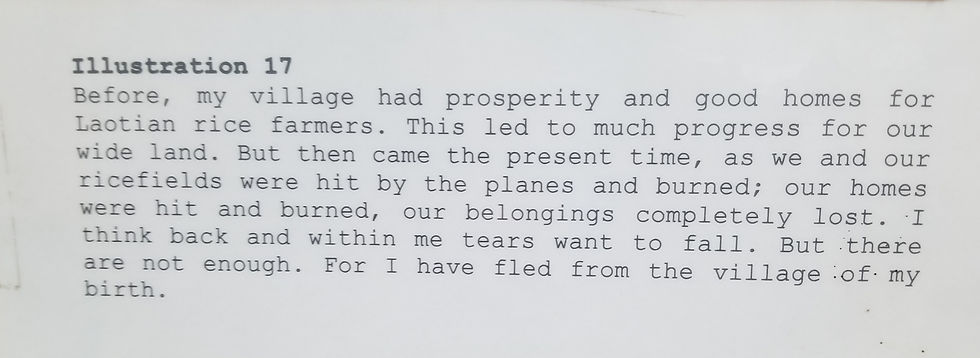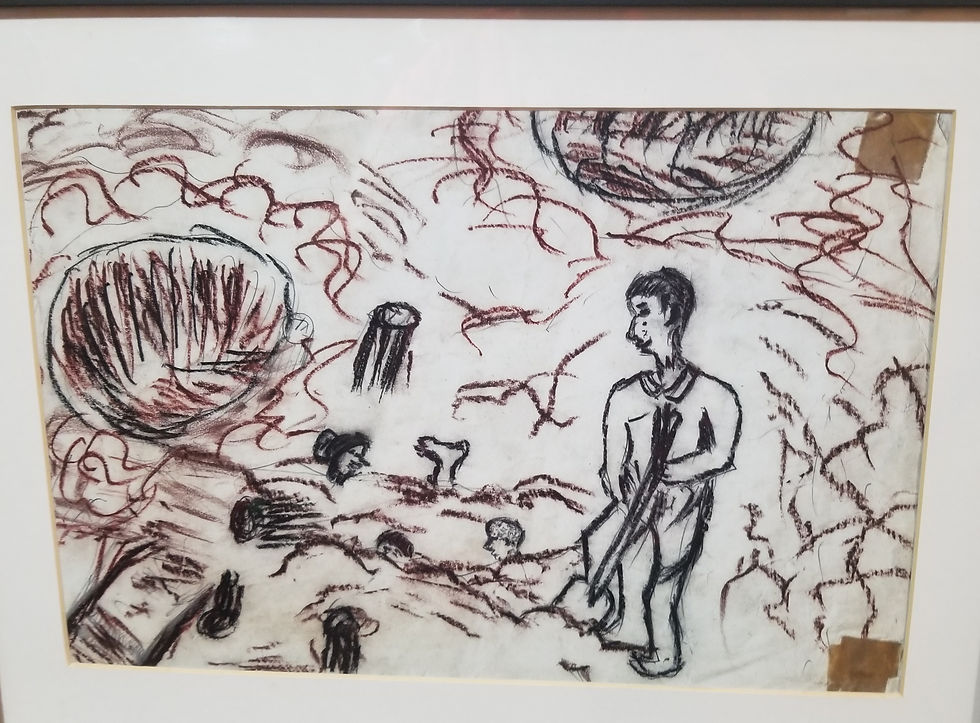The Cope Visitor Centre
- Pippa

- Oct 5, 2019
- 2 min read
My one memory of the war in Laos during the 1970s was some grainy black and white footage a Toronto film-maker showed me of US aircraft dropping bombs into the Laos jungle. I was properly shocked but never imagined the true effects of those indiscriminate bombings until a visit to Cope (Co-operative Orthotic and Prosthetic Enterprise) in Vientiane yesterday.
During the first week of my Cuso in-country orientation I’ve accumulated various facts and figures:
· 67% of Lao people live in rural areas
· 60% of rural dwellers depend on subsistence living which means that they forage and find what they require to live each day
· food security requires improvements and strategies must be developed to secure food resources
· to the United Nations’ 17 Sustainable Development Goals, Laos added No. 18. It reads:
Lives safe from UXO (Unexploded Ordnance)
· Section 18.3 of SDG No. 18 states: By 2030, ensure that all identified UXO survivors and victims have their needs met in health, and support is provided for livelihoods/ employment to most vulnerable survivors.
At the Cope Visitor Centre most of the exhibits are related to the effects of UXO and how survivors, and other Cope patients, have been helped to regain their mobility and dignity.

You confront the reality of UXO in the first display area where a mobile comprised of dozens of defused bomblets hangs in the entrance .
You see the maps showing the contaminated areas and then you read how much more has to be done. You note there have been successful UXO removals and then you are invited to read the stories of UXO survivors who just happened to stumble across some unexploded ordnance in the course of their daily lives:
· the village metal worker who spotted the perfect piece of steel in a field, unearthed it and it exploded;
· Mr. Ta who took his children fishing, found an unexploded bomblet and decided to try to bring the fish to the surface by detonating the device.
You’re taken into a traditional Lao village hut where you view simple household items fashioned from the scrap metal of exploded ordnance: cowbells, spoons, mugs, small tables. And while you’re in the hut, you’re listening to a BBC radio documentary called “Bomb Hunters” which explains how a global demand for steel has driven up the price of scrap metal. You understand that a very different type of foraging is proving both life-changing and lethal.

There’s artwork too. Depictions, in words and drawings, by those who survived the onslaught of bombings





This is all a bit overwhelming. 60% of rural citizens foraging for a living. Families facing the dangers of uxos.